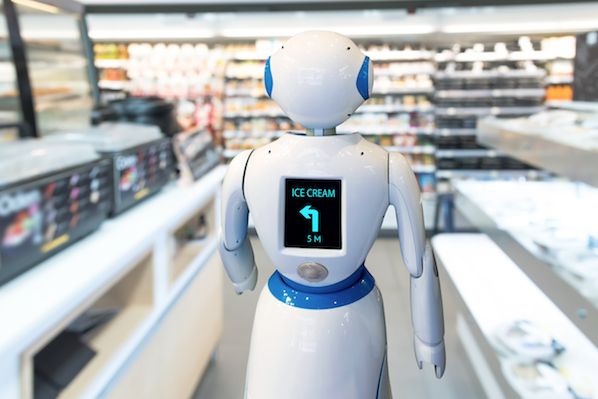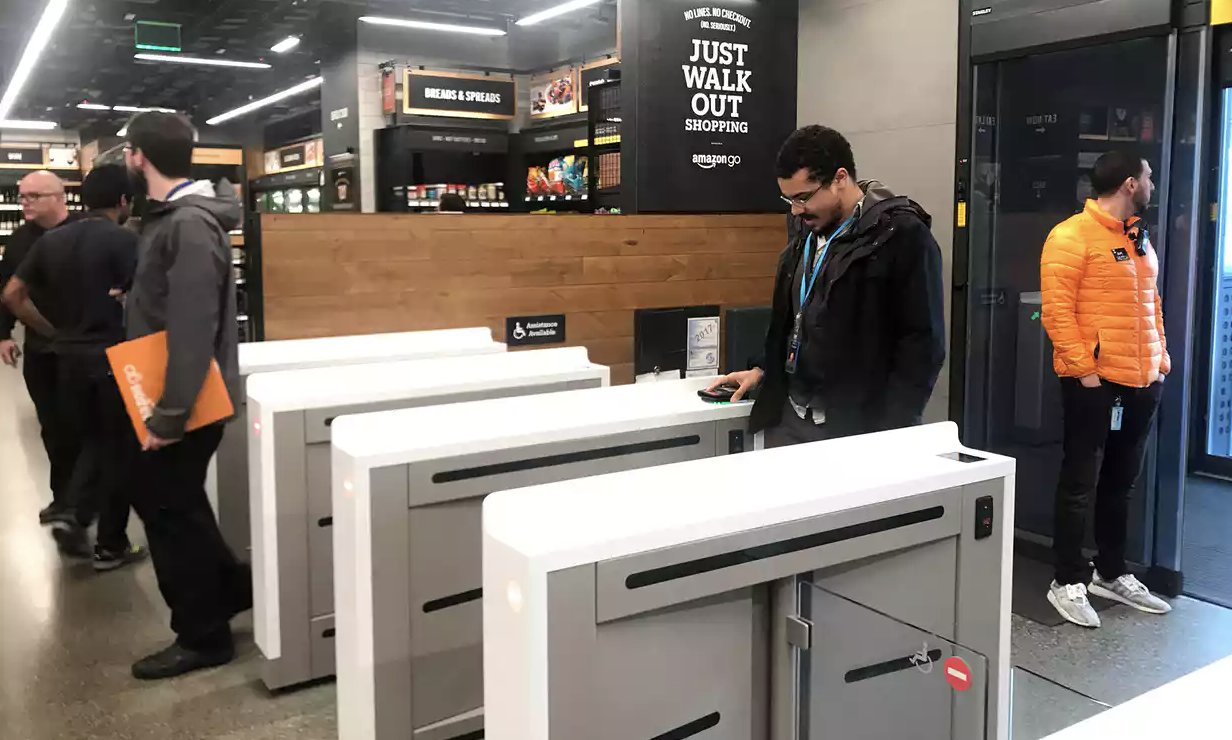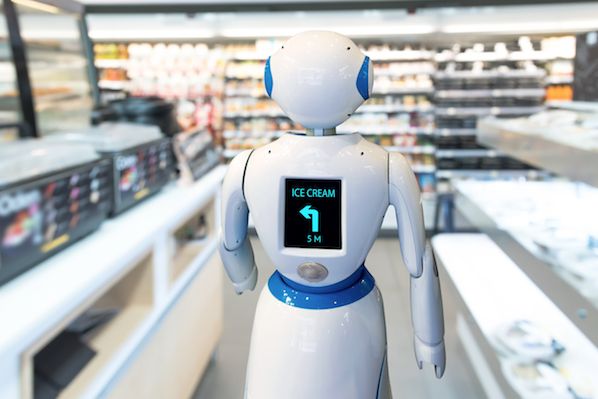When you’re done shopping, you leave the store immediately. Since you’ve shopped there recently, you receive an automatic discount. The shelf where you picked up the jeans, meanwhile, takes note of the purchase and sends that information to a back-end inventory system, so the retail store’s manager knows to re-stock. Automated Checkout You’ve probably seen how long lines deter your customers from purchasing products. Additionally, you can use IoT to track items a customer has been looking at online, and send that customer a personalized discount when she’s in-store. In the retail industry, this means customers can receive discounts, special events, or other reminders when they’re near a shop and have previously downloaded the store’s app. After opening the Macy’s app in-store, shoppers are alerted to promotions and discounts. You can use Smart Shelves to automate both of those tasks, while simultaneously detecting potential theft. Smart Shelves inform you when items are running low or when items are incorrectly placed on a shelf, which makes your inventory process cost-effective and more precise. OSHbot, Lowe’s newest robot employee, helps customers find specific products and provides information on promotions and inventory -- plus, he’s (she’s?)

You walk into a store in search of new sunglasses.
As you enter, your smartphone pings, and you open it to find a map, showing you where the sunglasses you looked at online are on display in-store. You walk over to them, try them on, and put them in your bag. A robot rolls up to you and intercepts, asking if you need help finding anything else. The robot takes you to a jeans display, as you’ve requested, and finds your size.
When you’re done shopping, you leave the store immediately. Your items are scanned by sensors as you leave and added up — the final price is then deduced from your mobile payment app. Since you’ve shopped there recently, you receive an automatic discount.
The shelf where you picked up the jeans, meanwhile, takes note of the purchase and sends that information to a back-end inventory system, so the retail store’s manager knows to re-stock.
Sound a little too much like Smart House? Maybe, but this experience is closer than you think, thanks to the rise of IoT, or Internet of Things, which creates a network between internet-connected physical devices. In the next few years, physical devices capable of being connected to the internet will continue to rise — in fact, by 2020, it’s estimated there will be over 30 billion IoT devices.
The scenario above is explained from a customer’s perspective, but it’s important to take note of just how deeply IoT can affect retail store owners and employees. McKinsey estimates that the potential economic impact of IoT in retail environments will range from $410 billion to $1.2 trillion per year by 2025.
IoT can reduce inventory error, optimize your supply chain management, and decrease labor costs. Ultimately, IoT can help your traditional brick-and-mortar shop compete with today’s online-first shopping world, by exponentially improving customer experience and decreasing unnecessary expenses.
There are numerous IoT-related benefits to the retail industry, but here, we’ll hone in on the seven most important ways we think IoT will change retail in 2018.
IoT Applications in Retail
1. Automated Checkout
You’ve probably seen how long lines deter your customers from purchasing products. And, as a manager, it can feel unprofitable to pay multiple employees to work during busier shopping times. With IoT, you can set up a system to read tags on each item when a customer leaves the store. A checkout system would then tally the items up and automatically deduce that cost from the customers’ mobile payment app.
Creating an automated checkout system using IoT devices would make your customers happier and more willing to enter your store, especially if they are on a time crunch. It can also save you a ton of money — McKinsey estimates automated checkout can reduce cashier staff requirements by up to 75%, resulting in savings of $150 billion to $380 billion a year in 2025.

2. Personalized Discounts
If you have frequently returning customers, I bet you’d like to reward them for their loyalty. With IoT, you can set up sensors around the store that send loyalty discounts to certain customers when they stand near products with their smartphones, if those customers sign up for…

COMMENTS